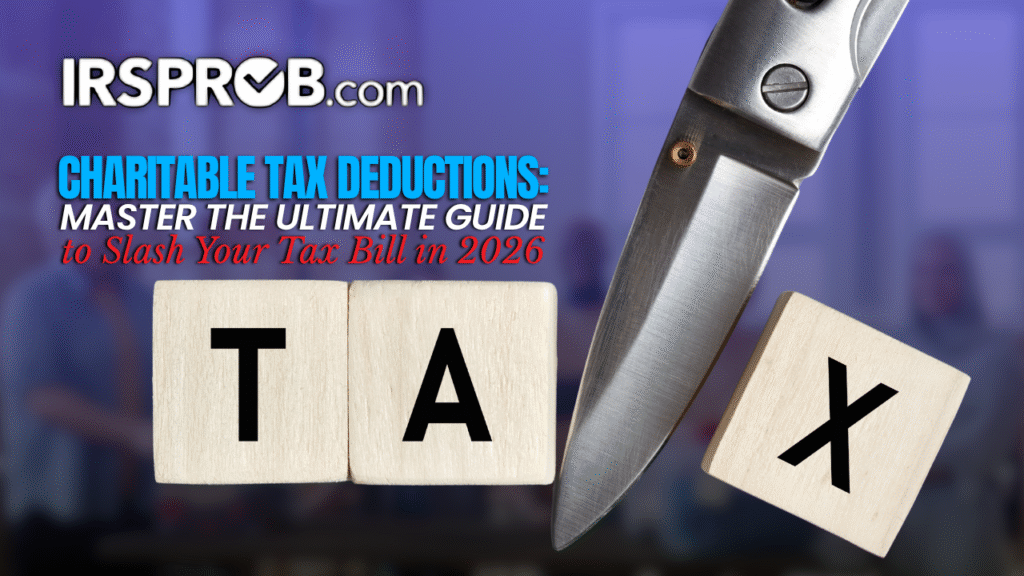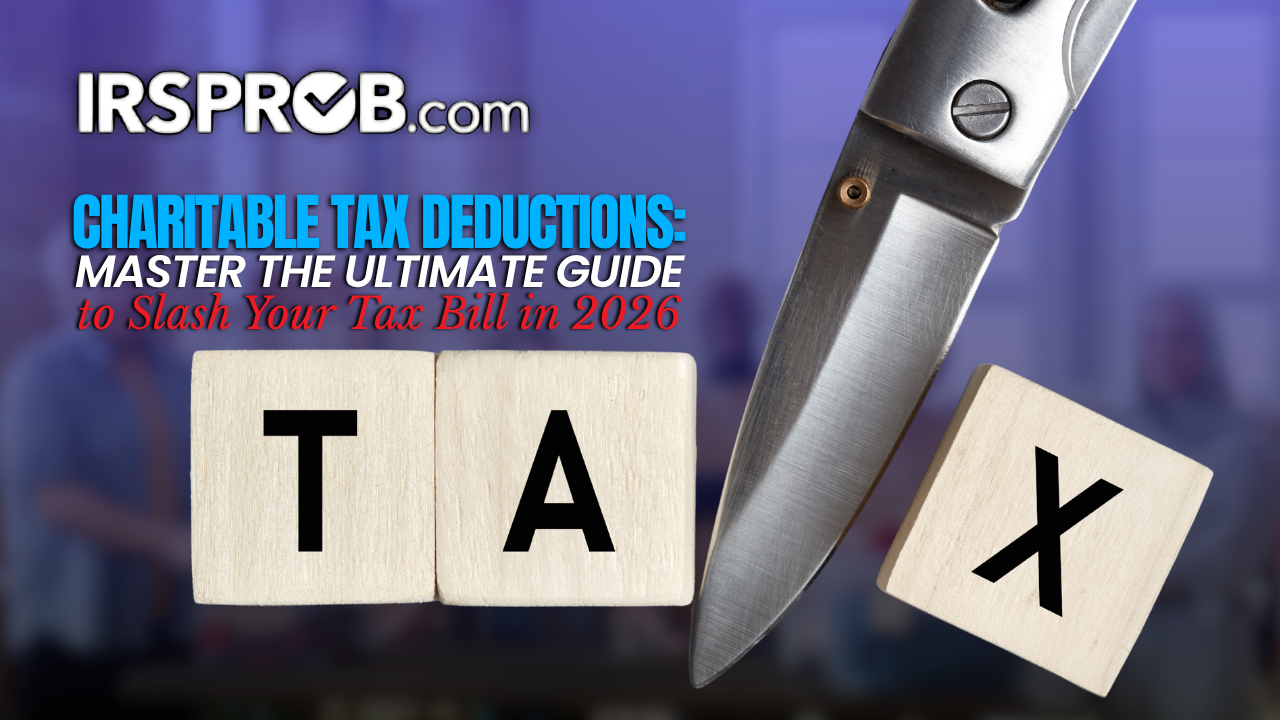
Charitable tax deductions can save you thousands of dollars, yet most people leave this money on the table simply because the tax rules seem confusing. Whether you’re donating $500 or $50,000 each year, understanding how charitable deductions actually work can make a substantial difference in what you owe come tax season.
Big changes are coming in 2026 that will affect how you claim these deductions. Some will make it easier to save, while others might catch you off guard if you’re not prepared.
Not Every Donation Counts (Unfortunately)
Not Every Donation Counts (Unfortunately). I hate to be the bearer of bad news, but that GoFundMe campaign for your coworker’s medical bills? Not deductible. That small business you helped keep afloat during tough times? Same story. What you need is an organization with official 501(c)(3) status. We’re talking about:
- Churches and religious organizations
- Schools and universities
- Hospitals and medical research facilities
- Established charitable foundations
Before you write a big check, spend two minutes on the IRS Tax Exempt Organization Search tool. It’ll save you from that awkward moment next April when your tax preparer tells you half your donations don’t qualify.
The Itemizing vs. Standard Deduction Choice
This is where things get tricky for most people. You can’t take the standard deduction AND claim your charitable tax deductions. You’ve got to pick one.
At the moment, the standard deduction is $14,600 for singles and $29,200 for married persons. Before it makes sense to itemize, your itemized deductions which is charitable gifts, mortgage interest, state taxes, short sales on residences, etc. must exceed those amounts.
For a lot of people, the standard deduction wins. But there’s a smart workaround to maximize your charitable tax deduction benefits.
The Bunching Method That Actually Works
Donor-Advised Funds Make This Easier
Think of a donor-advised fund as a charitable savings account. Contribute a large amount to your account, receive the full tax deduction for that account for that year, but take your time deciding how to allocate the amount to different charities over the next several years. This way, you enjoy the tax benefits immediately while being able to take your time donating. Participating in charitable tax deduction is truly a win-win situation! Just a heads up, though donating property can be a bit more complicated.
You get the immediate tax benefit while still spreading your giving out over time. It’s a win-win.
Property Donations Get Complicated Fast
Cash donations are simple for charitable tax deductions. You give $1,000, you deduct $1,000 (assuming you’re itemizing and within the limits). But donate property and suddenly you’re dealing with fair market value calculations that can get messy. That car you’re donating? If the charity sells it, your charitable tax deduction is usually limited to whatever they got for it—which might be way less than you hoped.
Here’s something that a lot of people overlook: if you volunteer your time and use your car, you can deduct 14 cents per mile driven. I know it’s not a lot of money, but you can rack up the dollars if you’re a volunteer who drives often when claiming charitable tax deductions.
The Paperwork Part Nobody Enjoys
There Are Caps on How Much You Can Deduct
The IRS won’t let you deduct unlimited amounts, even if you’re feeling especially generous. For cash donations, you’re typically limited to 60% of your adjusted gross income. Property donations have even lower caps usually 30% or 50% depending on what you’re giving and who’s getting it.
Here’s how it works in practice: let’s say your income is $100,000 and you donate $70,000 in cash. You can only deduct $60,000 this year. But that extra $10,000? You can carry it forward to next year. You’ve got five years to use up any excess.
One more thing that trips people up if you get something back for your donation, like dinner at a charity gala or concert tickets, you have to subtract that value from your deduction. The IRS thought of that one.
A Special Break for Retirees
Once you turn 70½, you unlock one of the best tax strategies available: the qualified charitable distribution. You can send up to $108,000 directly from your traditional IRA to a charity without paying any taxes on it.
Why is this such a big deal? Because it counts toward your required minimum distribution but doesn’t increase your taxable income. For retirees trying to keep their income low for Medicare premiums or to avoid higher taxes on Social Security, this is gold.
And you get this benefit whether you itemize or not.
What’s Changing in 2026?
Pay attention here because these changes affect pretty much everyone who gives to charity. First, even if you take the standard deduction, you can now deduct up to $1,000 in cash donations ($2,000 for married couples). This is brand new and honestly pretty generous for average donors.
Second, if you itemize, your charitable donations have to exceed 0.5% of your income before they start counting. So if you make $100,000, your first $500 in donations basically doesn’t count toward your deductions.
Third, that 60% income limit for cash donations is now permanent. At least we’ve got some certainty.
Fourth, and this one stings for high earners there’s now a 35% cap on all itemized deductions combined. Wealthy taxpayers are going to need to completely rethink their strategies.
Putting This Into Practice
Tax strategy isn’t exactly fun dinner conversation, but if you’re already giving to charity, you might as well do it smartly. Keep every single receipt, every acknowledgment letter, every piece of documentation for your charitable tax deductions.
Start planning now for those 2026 changes. If you’re close to the itemizing threshold, consider bunching your donations. If you always take the standard deduction, remember that starting in 2026, you can still write off up to $1,000 in cash gifts.
And honestly? If your charitable giving is substantial or your tax situation is even moderately complicated, spend the money on a good tax advisor. They’ll spot charitable tax deductions you’d never think of. I’ve seen people leave literal thousands on the table because they didn’t know what the rules allowed.
For Your Takeaways
Giving to charity should come from the heart, not from trying to game your taxes. But if you’re going to give anyway and I hope you do and there’s no reason not to structure it in a way that also benefits you financially.
The tax breaks exist to encourage charitable giving. Using charitable tax deductions isn’t cheating the system; it’s just being smart with your money. Your favorite charity gets the same amount either way, but you might keep a bit more of your hard-earned cash in the process.
The rules are there. You might as well understand them and use them to your advantage.
For more informative content on tax problems and concerns visit irsprob.com.






